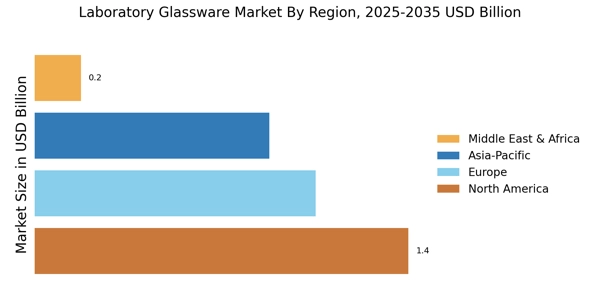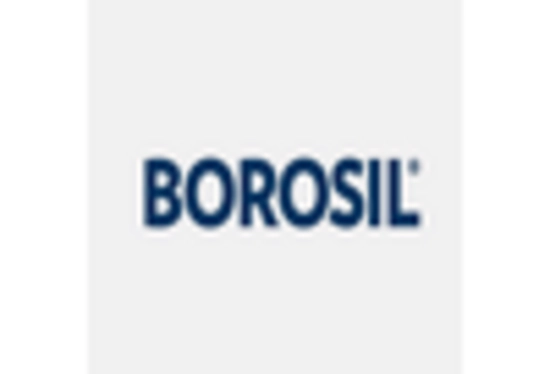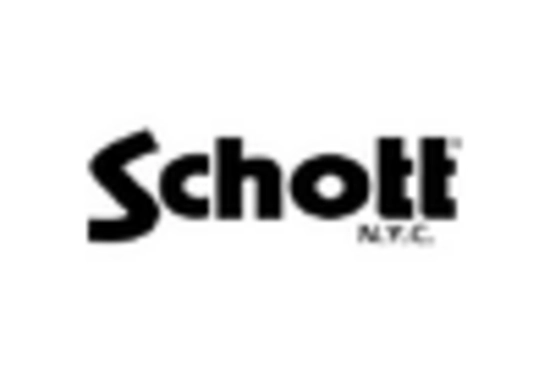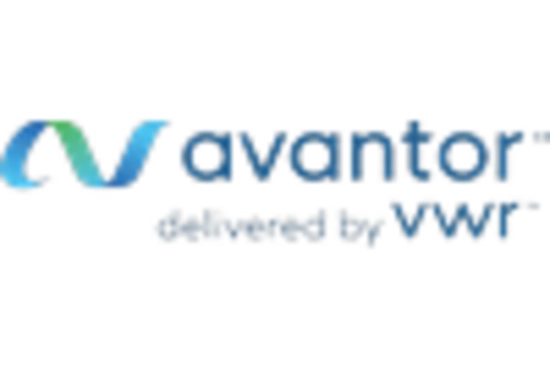Growing Environmental Awareness
The Laboratory Glassware Market is increasingly influenced by growing environmental awareness among consumers and organizations. There is a rising preference for sustainable and eco-friendly laboratory glassware, which is prompting manufacturers to adopt greener production methods. In 2025, it is projected that the market for sustainable glassware will constitute around 25% of total sales, reflecting a shift towards environmentally responsible practices. This trend is driven by regulatory pressures and the desire to reduce the ecological footprint of laboratory operations. As a result, manufacturers are exploring alternative materials and recycling initiatives to meet the demand for sustainable products. The emphasis on environmental responsibility is likely to shape the future landscape of the laboratory glassware market.
Expansion of Laboratory Facilities
The expansion of laboratory facilities across various sectors is a significant driver of the Laboratory Glassware Market. As industries such as healthcare, education, and research institutions grow, the need for laboratory glassware is expected to increase correspondingly. In 2025, the market is projected to benefit from the establishment of new laboratories, particularly in emerging economies, where investments in scientific research are on the rise. This expansion is not only creating new opportunities for glassware manufacturers but also fostering innovation in laboratory practices. The increasing number of laboratories necessitates a diverse range of glassware products, from basic beakers to specialized equipment, thereby driving overall market growth.
Increased Focus on Quality Control
Quality control remains a pivotal aspect of the Laboratory Glassware Market, as organizations strive to meet stringent regulatory standards. The demand for laboratory glassware that adheres to high-quality specifications is on the rise, particularly in industries such as pharmaceuticals, food and beverage, and environmental testing. In 2025, it is estimated that the market for high-quality glassware will account for over 40% of total sales, driven by the necessity for compliance with international standards. This focus on quality not only enhances the reliability of experimental results but also mitigates risks associated with product failures. As a result, manufacturers are increasingly investing in advanced production techniques to ensure that their glassware meets the evolving needs of quality assurance in laboratories.
Rising Demand in Research and Development
The Laboratory Glassware Market is experiencing a notable surge in demand driven by the increasing investments in research and development across various sectors. As organizations prioritize innovation, the need for high-quality laboratory glassware becomes paramount. In 2025, the market is projected to reach a valuation of approximately USD 3 billion, reflecting a compound annual growth rate of around 5%. This growth is largely attributed to the expanding pharmaceutical and biotechnology sectors, which require precise and reliable glassware for experimental procedures. Furthermore, educational institutions are also ramping up their laboratory capabilities, thereby contributing to the overall demand for laboratory glassware. The emphasis on quality and reliability in research settings underscores the critical role that laboratory glassware plays in achieving accurate results.
Technological Advancements in Manufacturing
Technological advancements are reshaping the Laboratory Glassware Market, leading to the development of innovative products that enhance laboratory efficiency. The integration of automation and precision engineering in the manufacturing process has resulted in glassware that is not only more durable but also tailored to specific applications. In 2025, it is anticipated that the market for technologically advanced laboratory glassware will grow by approximately 6%, as laboratories seek to optimize their workflows. These advancements allow for the production of glassware that can withstand extreme temperatures and chemical reactions, thereby expanding their usability across various scientific disciplines. Consequently, the adoption of such advanced glassware is likely to become a standard practice in modern laboratories.


















Leave a Comment